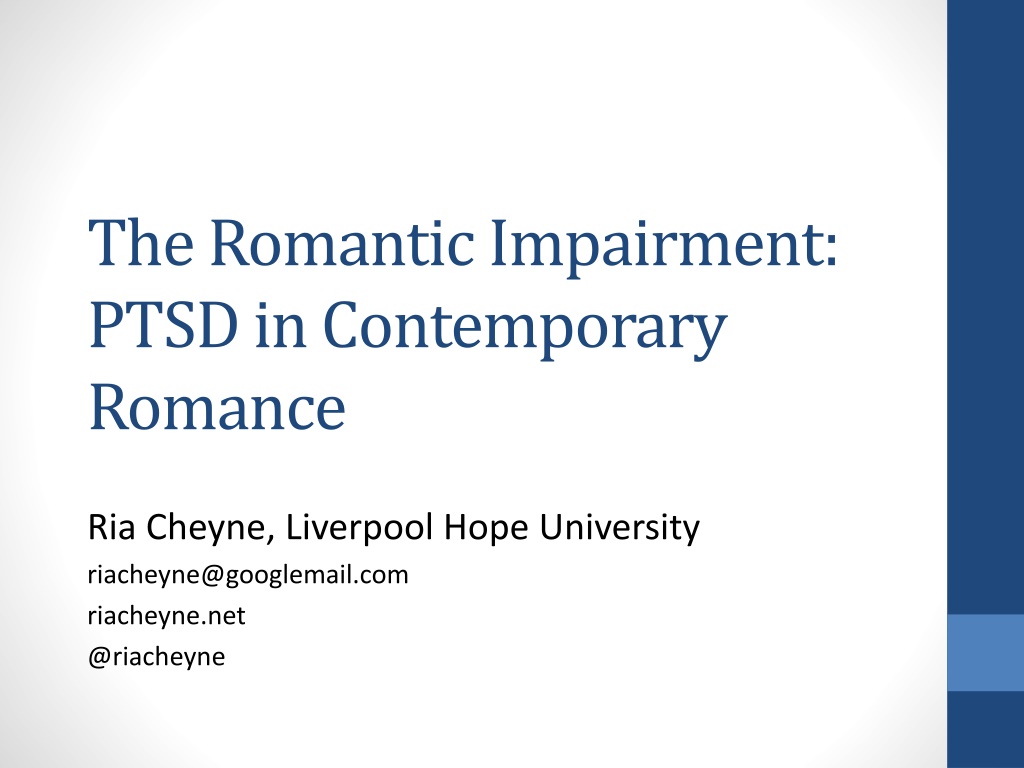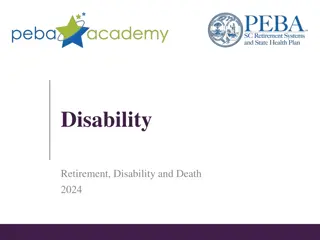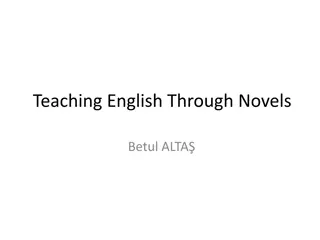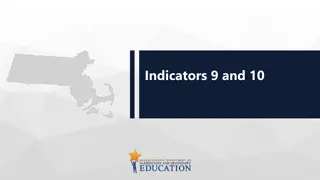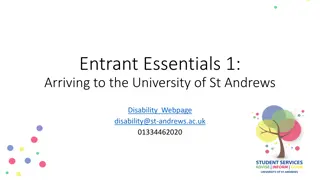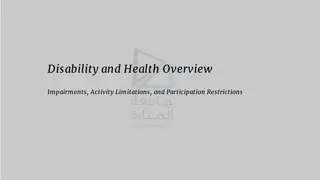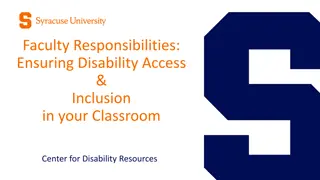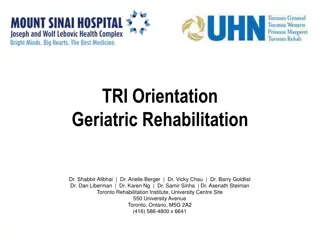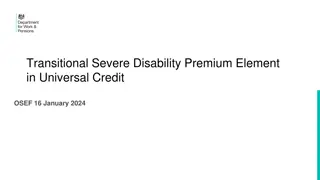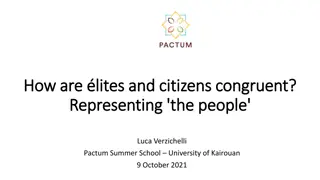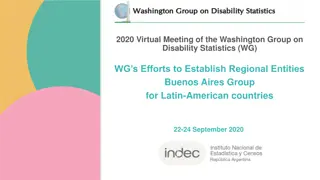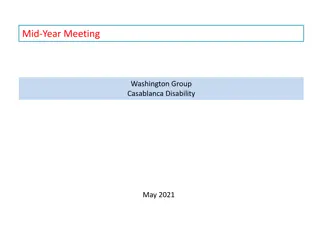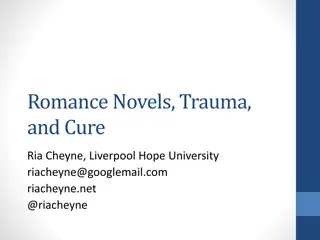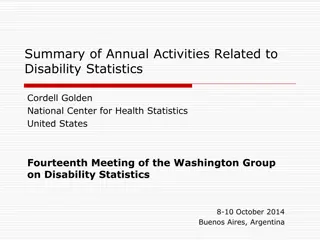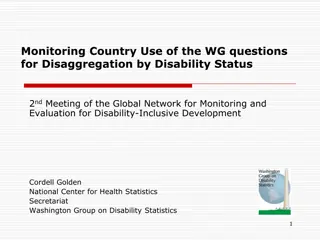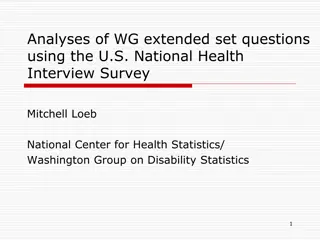Disability Representation in Contemporary Romance Novels
Analyzing representations of disability in modern romance literature reveals insights into societal perceptions and impacts of these portrayals. Focusing on popular fiction, the research explores how disability is depicted, shaping attitudes and reflecting complexities without delving into therapeutic aspects.
- Disability Representation
- Contemporary Romance Novels
- Societal Perceptions
- Popular Fiction
- Complex Depictions
Download Presentation

Please find below an Image/Link to download the presentation.
The content on the website is provided AS IS for your information and personal use only. It may not be sold, licensed, or shared on other websites without obtaining consent from the author. Download presentation by click this link. If you encounter any issues during the download, it is possible that the publisher has removed the file from their server.
E N D
Presentation Transcript
The Romantic Impairment: PTSD in Contemporary Romance Ria Cheyne, Liverpool Hope University riacheyne@googlemail.com riacheyne.net @riacheyne
Structure Locating this research Romance novels Disability in Romance Novels PTSD as romantic impairment Potentials and Problems A Counter-Example: Ruth Wind, Reckless (1997) Conclusion
Locating My Work Analyse representations of disability in literature for: what they might reveal about a disabling society new insights into texts (and genres) Focus on representations of disability in contemporary popular fiction, particularly genre fiction Interested in texts circulating in culture and the effects they have Starting point: representations reflect and shape attitudes towards disability Caveat: representations and their effects are complex Not interested in reading as therapy or writing as therapy
Literary Studies Disability Studies Me (Critical) Medical Humanities?
The Romance Novel A Central Love Story: The main plot centers around individuals falling in love and struggling to make the relationship work. A writer can include as many subplots as he/she wants as long as the love story is the main focus of the novel. An Emotionally Satisfying and Optimistic Ending: In a romance, the lovers who risk and struggle for each other and their relationship are rewarded with emotional justice and unconditional love. Romance Writers of America, http://www.rwa.org/p/cm/ld/fid=578
Romance Most popular of popular genres consistently c. 13% of US consumer book market sales $1.08 billion sales in 2013 (RWA) the most popular, least respected literary genre (Regis, A Natural History of the Romance Novel)
Disability in Romance: General Trends Hero rather than heroine Disabled hero/heroine with nondisabled partner Acquired rather than congenital Focus on particular impairments
Disability in Romance: General Trends Narratives of curing/healing/overcoming Actual cure Pseudo cure Emotional/psychological wounds Sexual healing Romantic partner as agent of cure.
The Romantic Impairment Common impairments in romance novels: 1. visual impairment 2. spinal cord injury/lower limb paralysis 3. limp, scarring, amputation.
The Romantic Impairment Acquired doing something heroic or self- sacrificing Does not affect the hero s ability to be athletic, powerful, or successful Does not diminish the hero s attractiveness, to heroine or other women Does not involve incontinence, pain, or fatigue Often turns out to be curable.
S.E. Smith: In pop culture, [PTSD] seems to have become the stuff of romance http://meloukhia.net/2014/01/ptsd_is_not_romantic_or_ sexy/ P.T.S.D.(esire) http://bookclubs.barnesandnoble.com/t5/Unabashedly-Bookish-The- BN/P-T-S-D-esire/ba-p/378523
PTSD as Romantic Impairment Usually associated with veterans = heroism, self- sacrifice Military service = fitness, athleticism. Invisible Limited range of symptoms presented Symptoms generally decreased (sometimes cured) by end of novel.
The Appeal of PTSD Regis on romance: The novel chronicles the heroine s taming of the dangerous hero or her healing of the injured hero, or both (206). Multiple and interlinked healing processes. Tanner: In the romance novel interpretation of PTSD, it has an identifiable cause (i.e.: a traumatic event) and this cause is wholly external (i.e.: the character is not abnormal or a freak ). PTSD permits a military hero to show some vulnerability without appearing weak ( Romance Novels and Depression: A Taboo Topic? http://www.monkeybearreviews.com/2009/12/17/romance-novels-and-depression- a-taboo-topic/).
The Appeal of PTSD Romance readers can always expect a big emotional payoff when a tortured hero finds an everlasting romance with the right woman Julie Naughton, In Love and War: Romance Books, 2013 http://www.publishersweekly.com/pw/by- topic/new-titles/adult-announcements/article/59947-in-love- and-war-romance-2013.html
Problems and Potentials of PTSD Representation Awareness, empathy, understanding Focus on certain romantic symptoms while marginalising others Misleading impression of ease of recovery: For some bizarre reason, the PTSD sufferers in these stories seem to undergo a full recovery by the end of the book. Love conquers all, I suppose (Tanner). Reinforce problematic notion of healing through love/loved one as agent of cure. Healing is done by survivors, not tosurvivors (Shay, Achilles in Vietnam 187).
Ruth Wind, Reckless (1997) Hero and heroine with PTSD Wider range of symptoms Ramona rejects role of healer: I can love you [ ] but I can t heal you (242) She couldn t [ ] slay his dragons for him. He had to do it himself (243) No easy cure, lasting effects
Conclusions Medics/therapists need to be aware of these narratives and how they might shape a person s experience of PTSD Dominant cultural narratives risk of violence for those whose symptoms do not fit Conditions of production and consumption Reader engagement with texts is complex. Potential in happily ever after?
